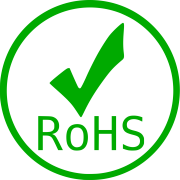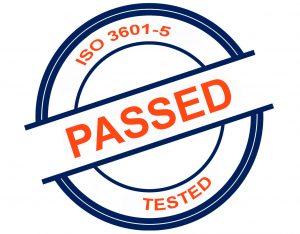EC1935/2004 Regulation

Food Contact Materials Regulation (EC) 1935/2004 Previous requirements for Food Contact Materials (FCM) varied significantly from country to country. In 2004, the European Commission decided to establish a single piece of legislation to standardise it within the EU. They particularly focused on EC1935/2004, which controls the requirements on materials for food contact applications. M Barnwell Services provides a wide range […]
Read MoreUSP Class VI

What is USP? The U.S. Pharmacopeial Convention (USP) is a scientific organisation that focuses on setting and developing standards for healthcare, food ingredients, medications, dietary supplements, and medical technologies. What is USP Class VI? The sequence of tests is made up of six classes, and Class VI is deemed the most rigorous and thorough. USP Class VI applies to one […]
Read MoreKTW certification

What is KTW certification? Drinking water is one of the most controlled food products. The product materials in contact with drinking water can generate microbial growth and impurities/contaminants. This, in turn, creates a serious health risk and also a threat to the environment. KTW (Plastics in Drinking Water) KTW (plastics in drinking water, Kunststoff-Trinkwasser) is a publication of the German […]
Read MoreRoHS Directive

RoHS Directive Overview What is RoHS? RoHS, also known as Directive 2011/65/EU, stands for Restriction of Hazardous Substances. Originated by the EU, it restricts the use of particular hazardous materials discovered in Electrical and Electronic Equipment (EEE). All corresponding products in the UK market must pass RoHS compliance. EU Directive 2011/65/EU (Restriction of the Use of Certain Hazardous Substances in […]
Read MoreISO23936-2

ISO23936-2 Standard Overview ISO (the International Organization for Standardization) is a global federation of national standards bodies. ISO23936 (Part 2: Elastomers) ‘’Petroleum, petrochemical and natural gas industries – non-metallic materials in contact with media related to oil and gas production.’’ This standard portrays the procedures and requirements for the elastomeric material to qualify for use in machinery for Oil & […]
Read MoreREACH Regulation

REACH Regulation Overview REACH stands for Registration, Evaluation, Authorisation, and Restriction of CHemicals. Implemented in June 2007 to develop and enhance the previous legislative structure for chemicals in the EU countries. It has become one of the most composite and profound pieces of legislation. It is a Regulation, rather than a Directive. Any company producing, importing, using or placing a […]
Read MoreNACE TM0187

NACE TM0187 Standard Overview Established in 1943 the ‘’National Association of Corrosion Engineers’’ (NACE) became the worldwide leader in evolving and improving the prevention of corrosion and control standards, education and certification for Oil & Gas Manufacture, Refining and Chemical Processing industries. NACE TM0187 – ‘’Elastomeric materials in sour gas environments.’’ The standard establishes a test method that estimates the […]
Read MoreNACE TM0297

NACE 0297 Standard Overview Established as the National Association of Corrosion Engineers (NACE) in 1943 it fast became the global leader in developing corrosion prevention and control standards, education and certification for Oil & Gas production, Chemical Processing, and Refining Industries. NACE TM0297- ‘’Effects of high temperature, high-pressure carbon dioxide decompression on elastomeric materials.’’ NACE TM0297 introduces test methods to […]
Read MoreWhat’s the difference between WRC and WRAS?

The below information will help explain those approvals and their differences. 1. What do WRAS and WRC stand for? WRAS – Water Regulations Advisory Scheme WRC – Water Research Council 2. What are the differences between those two approvals? There are no differences. The approval was called WRC, but then renamed to WRAS. 3. Where do the regulations apply? The […]
Read MoreISO3601-5

ISO3601-5: Suitability of elastomeric materials for industrial applications ISO3601-5 specifies the appropriateness of various rubber materials which may be used for the production of O Rings intended for use in industrial applications. ISO3601-5 also specifies the capability of the materials to fulfil many of the demands related to fluid power elements and systems. This includes fluid compatibility and temperatures. The […]
Read More